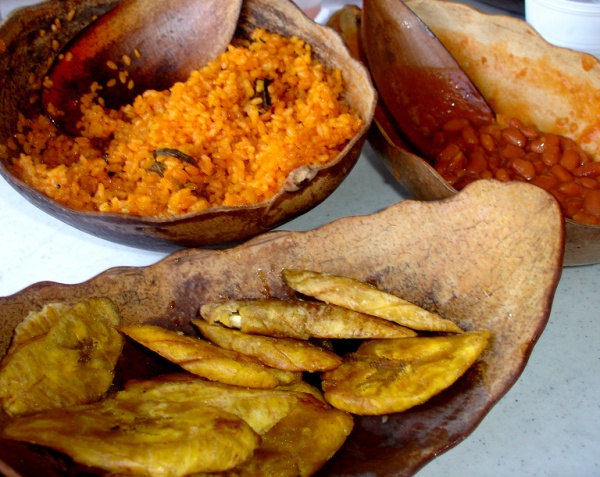Facts About Puerto Rican cuisine
Puerto Rican cuisine, known as "cocina criolla" is a rich blend of Taino Arawak, Spanish, and African influences, creating a unique and flavorful culinary tradition. By the late 19th century, this cuisine was well-established, with the first restaurant, La Mallorquina, opening in 1848, and the island's first cookbook, "El Cocinero Puertorriqueño" published in 1849.
The Taino people introduced tropical roots and tubers like yuca (cassava), ajicito pepper, recao (spiny leaf coriander), avocado, and fruits such as guava and pineapple. They also contributed cooking techniques like barbacoa, a form of barbecue.
Spanish influence brought a variety of ingredients such as wheat, chickpeas, black pepper, onions, garlic, cilantro, basil, sugarcane, citrus fruits, grapes, eggplant, and meats, including chicken, beef, pork, lamb, and goat. The Spanish also introduced culinary techniques and ingredients like olive oil, olives, capers, and herbs.
African influence added coconuts, coffee, okra, tamarind, yams, sesame seeds, and various types of bananas and root vegetables. African slaves also introduced deep-frying techniques.
The U.S. influence began after Puerto Rico became a U.S. territory in 1898, significantly impacting frying methods and incorporating corn oil, soda crackers, and American bacon into the cuisine. Latin American influence brought cocoa, tomatoes, chayote, papaya, bell peppers, and vanilla.
Puerto Rican cuisine varies by region. Arecibo is known for its use of cumin and coriander seeds and dishes like cetí (whitebait) pasteles. Hatillo, the Dairy Capital, produces unique cheeses, while Loíza, with its African roots, uses coconut extensively in dishes like empanadas and rice.
Key ingredients in Puerto Rican cuisine include grains and legumes like black beans, rice, and pigeon peas; herbs such as cilantro and recao; starchy tropical tubers like yuca and malanga; vegetables like eggplant and squash; meats and poultry like pork and chicken; and seafood. Fruits like mango, pineapple, and soursop play an important role, as do starchy fruits like plantains and breadfruit.
Puerto Rican cuisine features various condiments and sauces, including sofrito, adobo, and pique (hot sauce). Traditional dishes include arroz con gandules y lechón (yellow rice with pigeon peas and roasted pork), asopao (a gumbo-like soup), pasteles (green banana dough filled with meat), and coquito (coconut milk and rum eggnog).
During Holy Week, dishes like bacalao a la Vizcaína (salted cod stew) and caldo santo (a seafood soup) are popular. Thanksgiving in Puerto Rico features pavochon (turkey seasoned like lechón) and coquito with pumpkin or chocolate.
Christmas dishes include pasteles, lechón, and coquito, accompanied by sweets like arroz con dulce (rice pudding) and tembleque (coconut pudding). Appetizers and fritters such as alcapurrias and bacalaítos are common, as are breakfast items like arroz con leche (rice with milk) and pan de Mallorca (sweet rolls).
Puerto Rican cookbooks, such as Carmen Valldejuli's "Cocina Criolla" provide a rich insight into the island's culinary traditions. Notable chefs like Edgardo Noel, Carmen Valldejuli, Daisy Martinez, and Wilo Benet have played significant roles in popularizing Puerto Rican cuisine both on the island and internationally.
